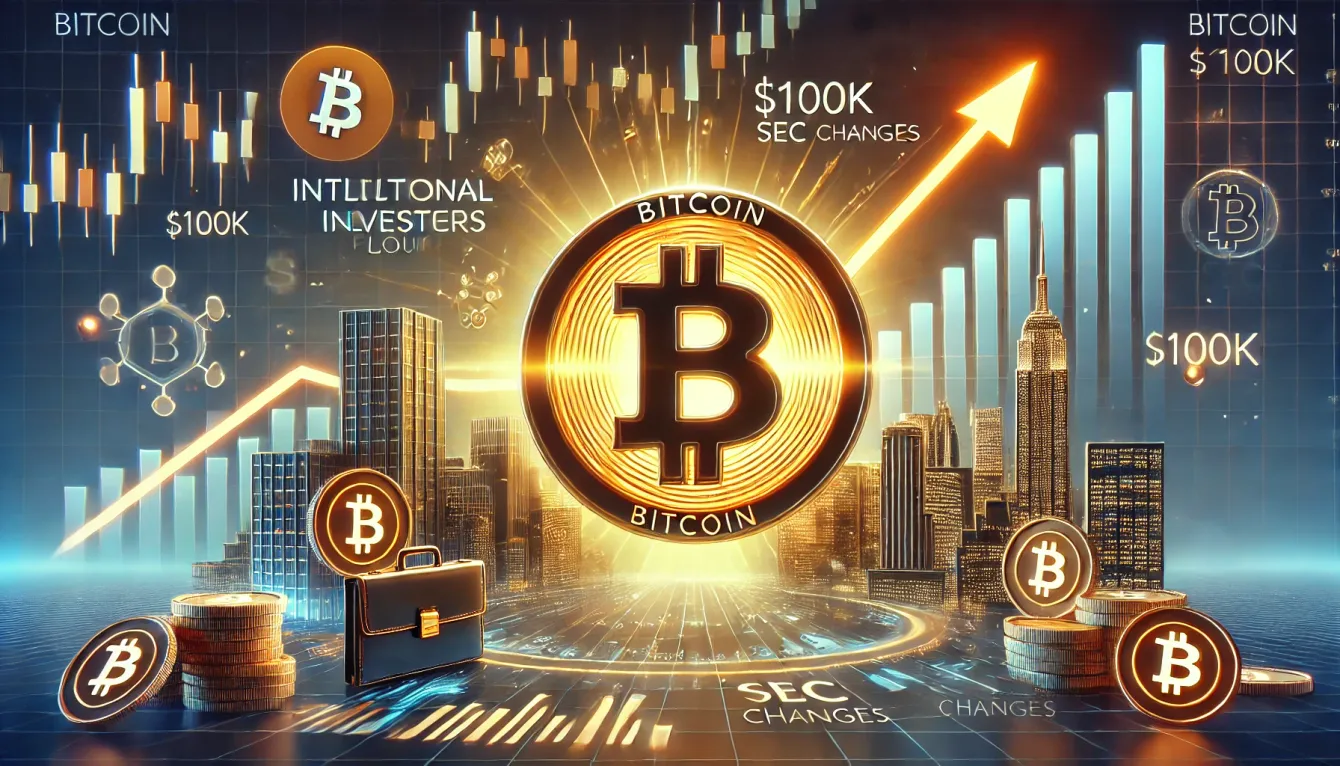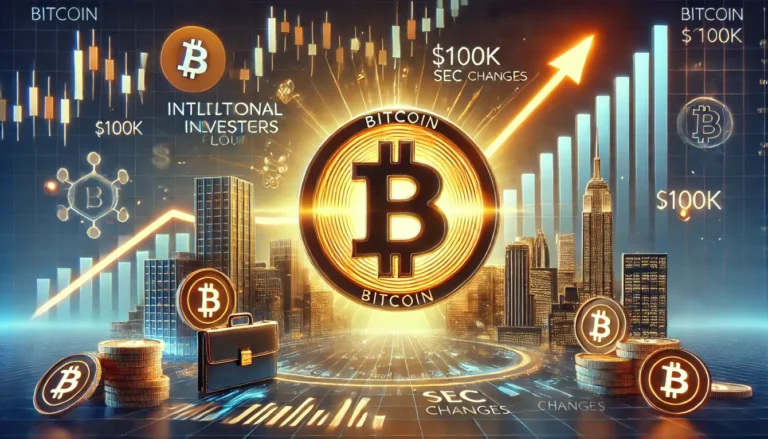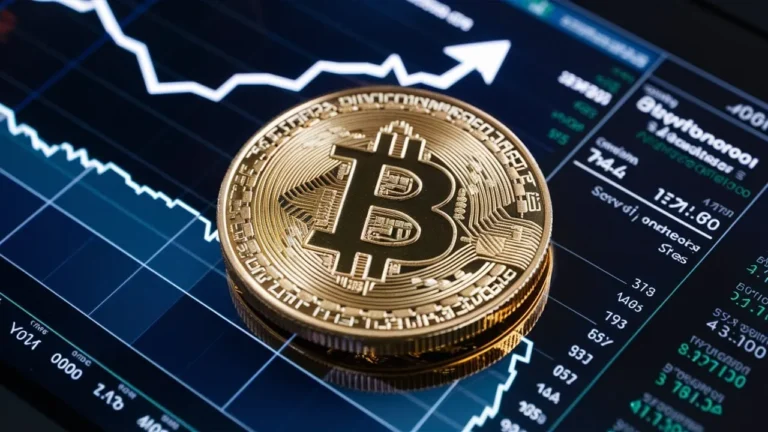Hardy News Cryptocurrency
Hardy News provides in-depth coverage of the latest trends in technology and innovation, focusing on advancements in Artificial Intelligence, machine learning breakthroughs, practical applications, and discussions on ethics in the digital era.

Our Top Picks
การอัปเดตฤดูกาล Altcoin: ดูว่ามีอะไรต่อไปสำหรับ Cardano และ Solana
steve smith 10 months ago
The cryptocurrency market is as dynamic as ever, with Bitcoin often stealing the spotlight. However, altcoins like Cardano (ADA) and...
Tether วางแผนที่จะลงทุน 775 ล้านดอลลาร์ในแพลตฟอร์มแบ่งปันวิดีโอ Rumble
steve smith 10 months ago
Hexarq ได้รับการอนุมัติจาก AMF เพื่อเปิดตัวบริการ Crypto ด้วย BPCE ภายในปี 2568
steve smith 10 months ago
เกิดอะไรขึ้นใน Crypto วันนี้: ทรัมป์อาจชน Crypto?
Latest Guide
Bitcoin ทดสอบ $100K อีกครั้ง: อนาคตของ Cryptocurrency มีความหมายอย่างไร?
Bitcoin has made headlines once again as it tests the coveted $100,000 mark. The world’s first cryptocurrency, which has long been a symbol of both volatility and potential, continues to captivate the financial world. For many investors, the question on everyone’s mind is: Will Bitcoin finally break through the $100K barrier, and what will this mean for the future of digital currencies? The Rise of Bitcoin to $100K Bitcoin has seen a remarkable journey since its inception in 2009. Over the years, it has faced numerous challenges, from regulatory scrutiny to market corrections, but its underlying technology—blockchain—has continued to prove its potential. As of late 2024, Bitcoin has experienced a strong surge in value, testing the $100,000 price point once again. This climb is not without reason. Several factors are contributing to Bitcoin’s upward momentum, including institutional adoption, growing acceptance in mainstream finance, and increasing interest from retail investors. The integration of Bitcoin into financial portfolios as a hedge against inflation and economic uncertainty has driven its demand, further fueling its price rise. Institutional Adoption and Mainstream Acceptance One of the key drivers behind Bitcoin’s push towards $100K is the increasing institutional adoption. Major financial institutions, such as banks and hedge funds, are now treating Bitcoin as a legitimate asset class. Many have even added it to their balance sheets, viewing it as a store of value akin to gold. This institutional validation has sparked a wave of confidence in the market, helping to propel Bitcoin toward new heights. Additionally, Bitcoin is gradually being integrated into traditional financial systems. With the emergence of Bitcoin ETFs, futures contracts, and payment platforms like PayPal accepting Bitcoin, the cryptocurrency is becoming more accessible to the average investor. This mainstream acceptance has helped mitigate some of the volatility that has traditionally been associated with Bitcoin, making it a more attractive investment option. The Role of Inflation and Economic Uncertainty Another contributing factor to Bitcoin’s rise is the ongoing economic uncertainty around the world. Central banks around the globe have been printing money at unprecedented rates to combat inflation, leading many to look for alternative stores of value. Bitcoin, with its fixed supply of 21 million coins, is often seen as a hedge against inflation, providing a sense of security in uncertain times. As inflation continues to erode the value of fiat currencies, Bitcoin’s limited supply and decentralized nature make it an appealing option for those seeking protection from inflationary pressures. This has led to increased demand from both institutional investors and individual buyers, further driving its price upwards. The Road Ahead: Will Bitcoin Hit $100K? While Bitcoin’s recent surge is undoubtedly impressive, the road to $100,000 is not without its hurdles. The cryptocurrency market is notoriously volatile, and Bitcoin’s price can fluctuate rapidly in response to news, regulatory changes, and shifts in market sentiment. However, the growing institutional involvement and acceptance of Bitcoin as a legitimate asset class provide a strong foundation for its future growth. Experts remain divided on whether Bitcoin will reach and sustain the $100K level. Some believe that Bitcoin’s price could surpass $100K in the near future, driven by continued demand and adoption. Others caution that regulatory hurdles and market corrections could create obstacles for Bitcoin’s climb to $100K. The Impact on the Broader Crypto Market Bitcoin’s rise to $100,000 would not only be a significant milestone for the cryptocurrency itself but could also have a ripple effect on the broader crypto market. As the largest and most well-known cryptocurrency, Bitcoin often leads the way for other digital assets. A surge in Bitcoin’s price could result in increased attention on other cryptocurrencies, such as Ethereum, Binance Coin, and even smaller altcoins. Moreover, the success of Bitcoin could attract more developers and innovators to the blockchain space, leading to the creation of new decentralized applications (dApps), financial services, and use cases for blockchain technology. The broader adoption of blockchain could lead to greater integration of cryptocurrency into the global economy, further solidifying its position as an alternative asset class. Conclusion Bitcoin testing $100K again is a testament to its resilience and growing acceptance in the financial world. While its path to $100,000 may face challenges, its underlying technology and use cases continue to gain traction. As institutional investors, mainstream platforms, and retail buyers continue to embrace Bitcoin, the future of the cryptocurrency market looks promising. Whether or not Bitcoin hits the $100K mark in the immediate future remains to be seen, but one thing is clear: Bitcoin’s journey is far from over. For investors, this could be the beginning of a new era for digital assets—one where Bitcoin plays a central role in the global economy.
Latest Posts

Gold mania? Bank-run style lines at shops as precious metal glitters at all-time highs
Currency inflation and macroeconomic uncertainty are driving the price of gold, Bitcoin and similar assets to new levels.
Published: 1 hour ago

Bitcoin Coinbase Premium keeps BTC above $110K: Will this level hold?
Strong US demand for Bitcoin remains stable above $110,000, but revived long-held coins and surging derivatives point to turbulent days ahead.
Published: 1 hour ago
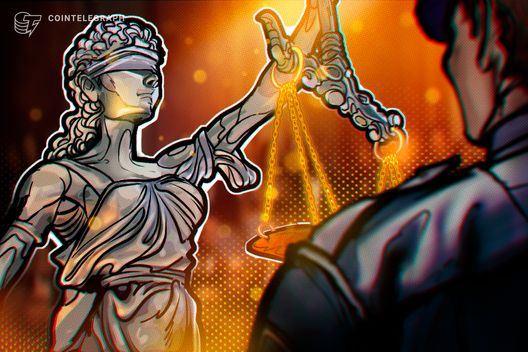
MEV bot exploit heads to US court, testing crypto’s legal gray zones
Anton and James Peraire-Bueno appeared in court this week to address allegations involving a $25 million exploit on the Ethereum blockchain.
Published: 2 hours ago

Franco-German bank ODDO BHF launches euro-backed stablecoin
As dollar-pegged tokens like Tether’s USDT and Circle’s USDC continue to dominate, the EUROD joins a growing wave of euro-backed stablecoins entering the market.
Published: 2 hours ago

Price predictions 10/15: BTC, ETH, BNB, XRP, SOL, DOGE, ADA, HYPE, LINK, XLM
Bitcoin and several altcoins are facing significant selling pressure on rallies, indicating that the bears are still trying to seize control of the market.
Published: 2 hours ago

Bitcoin's ‘Uptober’ vibes hinge on Fed rate cut odds, Nasdaq and tech stocks’ response
Bitcoin’s remaining October performance depends on Fed rate cut odds, BTC ETF inflows and the path major US stocks chose to take.
Published: 3 hours ago

Thiel-backed Erebor wins US approval as Silicon Valley Bank rival emerges
Erebor’s green light from US regulators is among the most significant bank charter approvals tied to digital assets since the 2023 regional banking crisis.
Published: 4 hours ago

DOGE holders are buying dips: Is $1.60 by 2026 realistic?
DOGE holders are quietly accumulating after the recent 66% crash, with onchain data showing that historically accurate top signals have yet to trigger.
Published: 5 hours ago

Solana becomes liquidity hub as USDT0, XAUt0 bring omnichain dollars, gold
Omnichain versions of Tether’s USDT and XAUT go live on Solana via Legacy Mesh, linking digital dollars and gold across blockchains.
Published: 5 hours ago

Bitcoin traders fear $102K BTC price dive next as gold sets new highs
Bitcoin saw fresh warnings of another dip to fill local lows on Binance, while gold hit record highs on Federal Reserve interest-rate cut hopes.
Published: 6 hours ago

Here’s what happened in crypto today
Need to know what happened in crypto today? Here is the latest news on daily trends and events impacting Bitcoin price, blockchain, DeFi, NFTs, Web3 and crypto regulation.
Published: 7 hours ago

What happens if Ether reaches $100,000?
ETH at $100,000 could mean a $12-trillion market cap. Explore ETF inflows, L2 scaling, staking dynamics and Ethereum’s resilience.
Published: 7 hours ago

Bitcoin to $74K? Hyperliquid whale opens new 1,240 BTC short
BTC’s technical setup suggests a potential price drop toward $74,000, as notable whales have stayed short. Is the top in for Bitcoin?
Published: 7 hours ago

LuBian-linked wallet moves $1.3B in BTC after DOJ reveals $15B forfeiture case
The transfer came a day after the US DOJ unsealed an indictment against Prince Holding Group, which allegedly used LuBian to launder illicit funds.
Published: 8 hours ago

Crypto ‘got a passing grade’ on weekend crash: Bitwise’s Matt Hougan
Bitwise’s chief investment officer praised DeFi platforms for their resilience during the weekend fallout, calling the market’s recovery a sign of strength.
Published: 8 hours ago

How to read crypto charts in 2025 (even if you’re a beginner)
Patterns, tools and indicators are key to making smarter crypto trading decisions. They help you spot trends and anticipate market moves with better insight.
Published: 8 hours ago

Ripple taps Absa to bring bank-grade crypto custody to South Africa
Ripple has partnered with South Africa’s Absa Bank to provide digital asset custody services, expanding its institutional custody network across Africa.
Published: 8 hours ago

BNB price analysis: ‘Double top’ setup warns of 30% drop ahead
BNB’s price upside momentum is waning further after Binance faced $21.75 billion weekly outflows and margin system exploit accusations.
Published: 9 hours ago

NFT markets rebound after $1.2B wipeout in Friday’s crypto crash
Top Ethereum NFT collections like BAYC, Pudgy Penguins and CryptoPunks remain in the red despite a partial market recovery after Friday’s crypto market crash.
Published: 10 hours ago
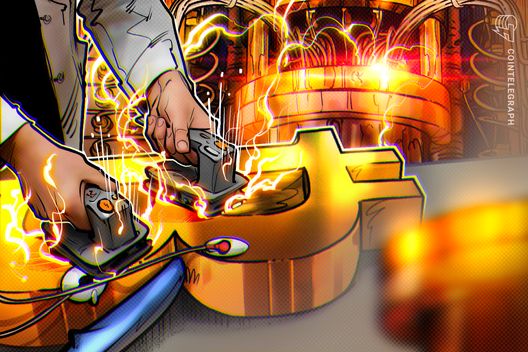
Quantum computers could bring lost Bitcoin back to life: Here’s how
Quantum computing could enable the reverse engineering of private keys from publicly exposed ones, putting the security of Bitcoin holders at risk.
Published: 10 hours ago

China Merchants Bank tokenizes $3.8B fund on BNB Chain in Hong Kong
CMBI’s tokenization initiative with BNB Chain builds on its previous work with Singapore-based DigiFT, which tokenized its fund on Solana in August.
Published: 10 hours ago

XRP price shows promise at $2.50: Is 57% rally still possible?
XRP’s macro outlook remained bullish, with analysts confident that a bullish breakout was possible if key support levels were reclaimed.
Published: 10 hours ago

Bitcoin metric shows ‘euphoria’ as $112.5K BTC price squeezes new buyers
Bitcoin short-term holders struggled to seal profits in recent days while overall supply ownership flashed a classic bull-market top warning.
Published: 11 hours ago

Coinbase invests in Indian crypto exchange CoinDCX at $2.45B valuation
Coinbase Ventures invested in Indian exchange CoinDCX at a $2.45 billion valuation as the US crypto company expands into India and the Middle East.
Published: 11 hours ago

From $10 to $10,000: How dollar-cost averaging works in crypto
Learn how DCA works in crypto: when to use it, key risks, fees, El Salvador’s example and how it compares to lump-sum investing and other strategies.
Published: 11 hours ago

US Bitcoin and Ether ETFs rebound as Powell signals rate cuts
US spot Bitcoin and Ether ETFs reversed course with fresh inflows after a wave of outflows following the recent market meltdown.
Published: 13 hours ago

How a crypto trader turned $3K into $2M after CZ mentioned a memecoin
After BNB Chain’s X hack, meme token “4” surged from $3K to $2M following CZ’s mention. We break down the timeline and key risks.
Published: 14 hours ago

48 new Bitcoin treasuries popped up in just 3 months: Bitwise
Rachael Lucas, an analyst at BTC Markets, said the growing accumulation of Bitcoin suggests “larger players are doubling down.”
Published: 15 hours ago

Ether set to go ‘nuclear’ with 3 active ‘supply vacuums’ — Analyst
The supply of Ether is being pressured like never before, and with increasing institutional demand, the price is expected to continue rising from here, analysts say.
Published: 15 hours ago

Bitcoin could see one more slump before all-time highs: Peter Brandt
Crypto analysts say the weekend’s market volatility is temporary and are predicting an upward trend to emerge in the coming weeks.
Published: 16 hours ago





